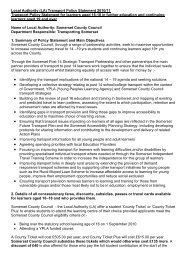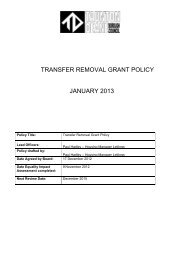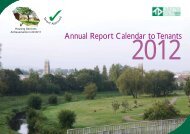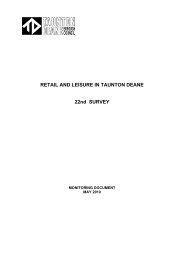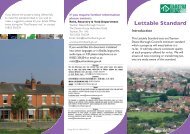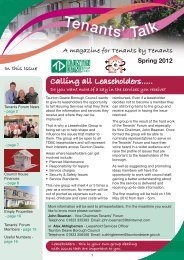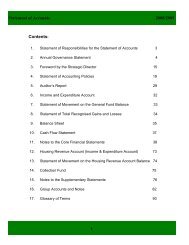Allotment Strategy (TDBC) - Taunton Deane Borough Council
Allotment Strategy (TDBC) - Taunton Deane Borough Council
Allotment Strategy (TDBC) - Taunton Deane Borough Council
Create successful ePaper yourself
Turn your PDF publications into a flip-book with our unique Google optimized e-Paper software.
14<br />
<strong>Allotment</strong> <strong>Strategy</strong> <strong>Taunton</strong> <strong>Deane</strong> <strong>Borough</strong> <strong>Council</strong><br />
5 National policy context<br />
The Department for Communities and Local Government (DCLG)<br />
The DCLG acknowledges that allotments and community gardens are valuable green spaces<br />
and community assets that can help improve people's quality of life by promoting healthy<br />
food, exercise and community interaction. The Government recognises the unique role of<br />
allotments as places which bring all sections of the community together providing opportunities<br />
for people to grow their own produce as part of the long term promotion of sustainability and<br />
healthy living.<br />
The Government's aim is to ensure that allotments are well managed, are considered as part<br />
of the overall green infrastructure, and are only disposed of where there is no demand for<br />
them and established criteria have been met. It states that it is committed to working with<br />
local authorities to promote best practice and ensure quality and appropriate availability now<br />
and for future generations. The Select Committee on Environment, Transport and Regional<br />
Affairs’ fifth report contains the statement:<br />
“We believe that allotments will often form a component part of a healthy neighbourhood.<br />
Given the undisputed health benefits of allotments we strongly recommend that they be<br />
explicitly noted in national public health strategy and integrated into local delivery of the<br />
strategy particularly for over 50s. We recommend that health authorities recognise and exploit<br />
the therapeutic potential for allotments for people with mental or physical health problems”<br />
The Government’s response to this was that it will consider how allotments form a component<br />
part of Healthy Neighbourhoods policy, recognise the health benefits of allotment gardening<br />
and will take this into account in a White Paper, but there is no prospect of legislative<br />
consolidation in the near future. It also stated that it supports the recommendation that private<br />
allotment providers take a long term approach to managing their sites and that replacement<br />
sites should normally be within ¾ mile from the centre of demand.<br />
Dept of Health White Paper November 2004 "Choosing health: making healthy choices<br />
easier"<br />
This document sets out the key principles for supporting the public to make healthier and<br />
more informed choices in regards to their health. It stated that the Government will provide<br />
information and practical support to get people motivated so that healthy choices are easier<br />
to make. The associated Physical Activity Delivery Plan covers school PE, sport, transport,<br />
the use of public open spaces and advice from the NHS. The associated Choosing Better<br />
Diet Plan covers advertising, obesity prevention, labelling and nutrition in school and hospital.<br />
National Society of <strong>Allotment</strong>s Gardeners (NSALG)<br />
The last major national survey of allotments was undertaken by the National Society of<br />
<strong>Allotment</strong> and Leisure Gardeners in 1997. It revealed that plots across England were<br />
disappearing at a rate of 9,400 a year and that the number of people on the waiting list had<br />
doubled since 1970. The NSALG survey informed a report by the Environment Transport<br />
and Regional Affairs Select Committee making various recommendations including calling<br />
for a reform of the legislative framework for allotments. The Government has said that is<br />
unlikely and went on to produce a best practice guide for Local Authorities in 2001 “Growing<br />
in the Community” which was reviewed and republished in 2008




